Von Ulaanbaator bis zur Gobi-Region
Publicēts: 04.08.2023
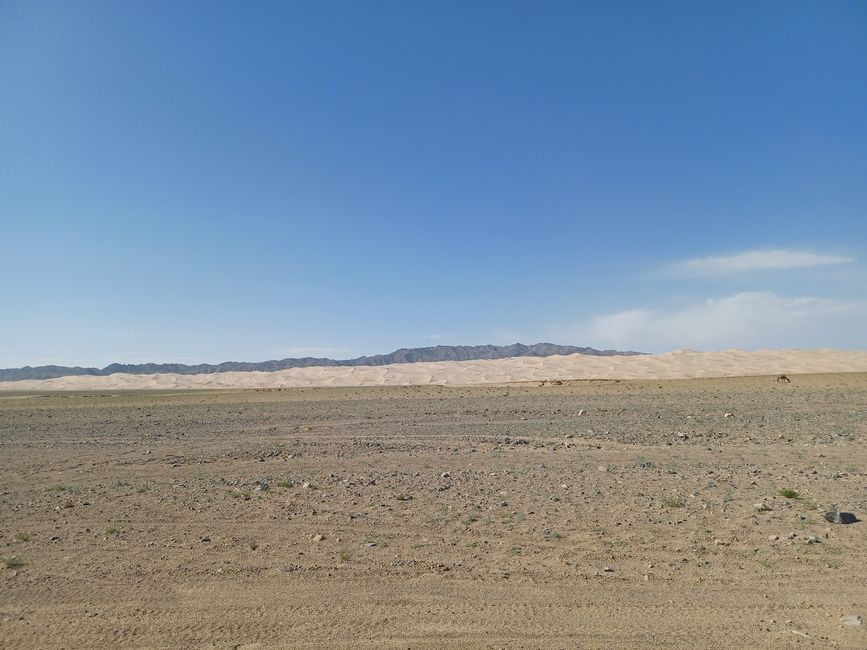
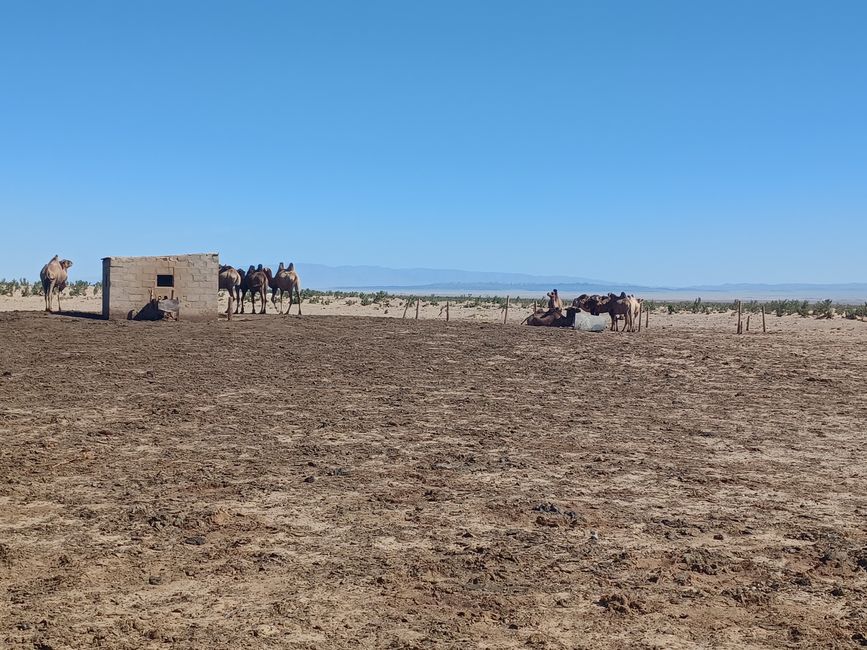
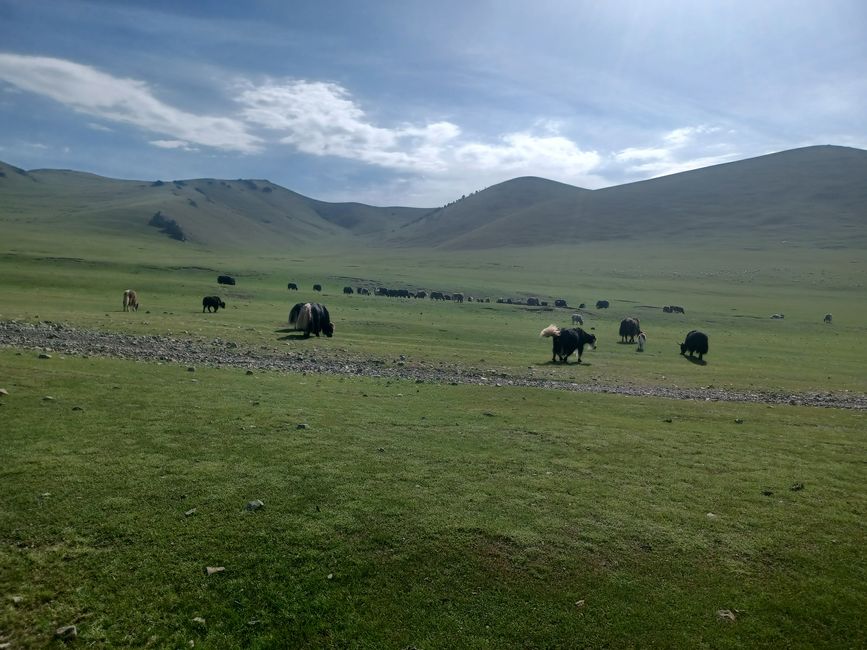
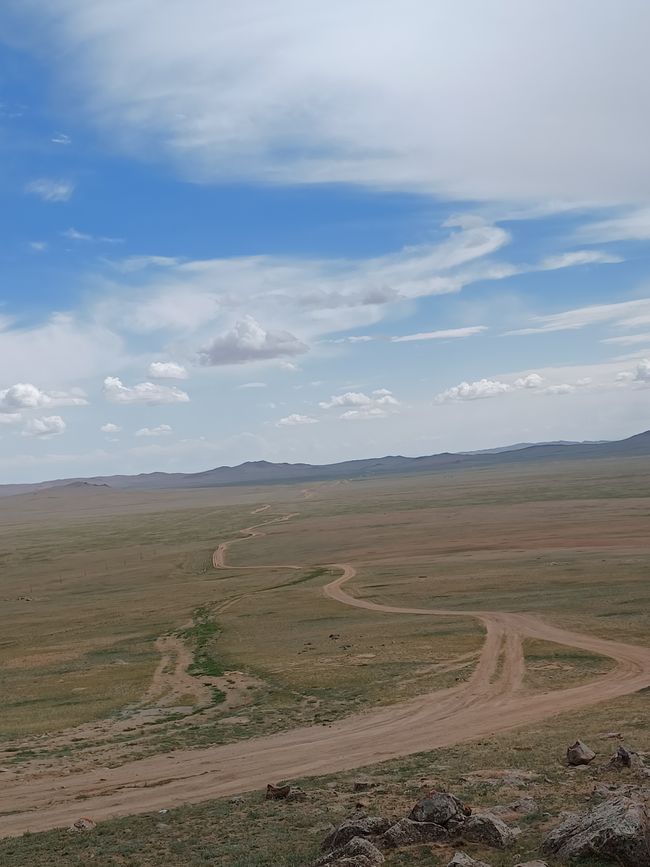
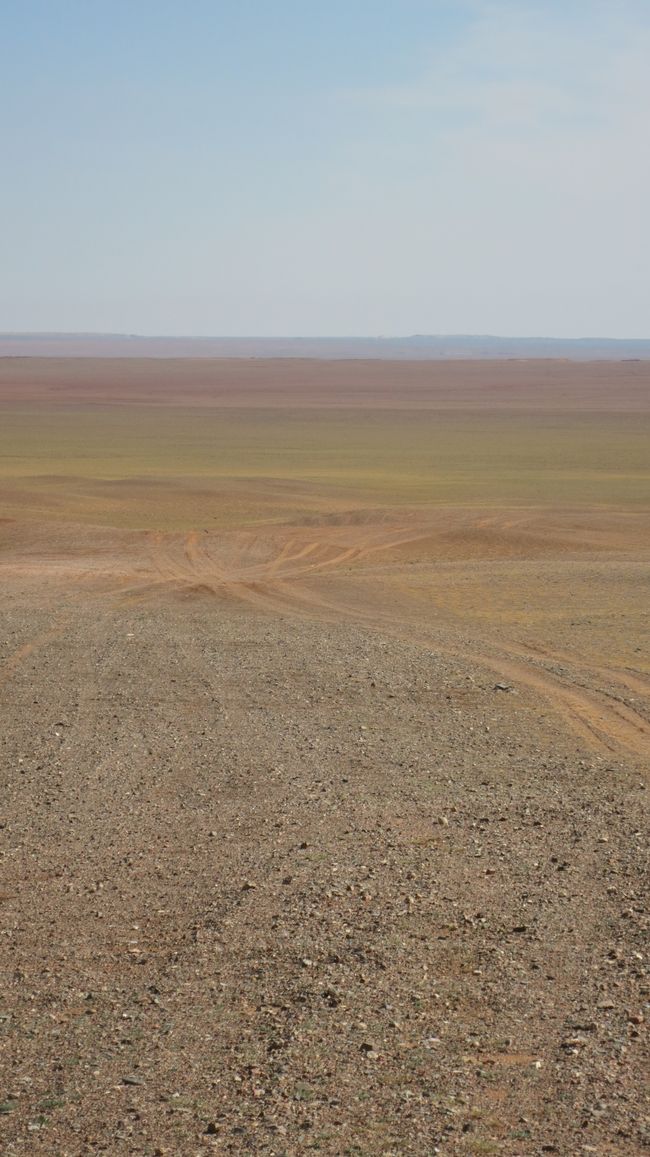
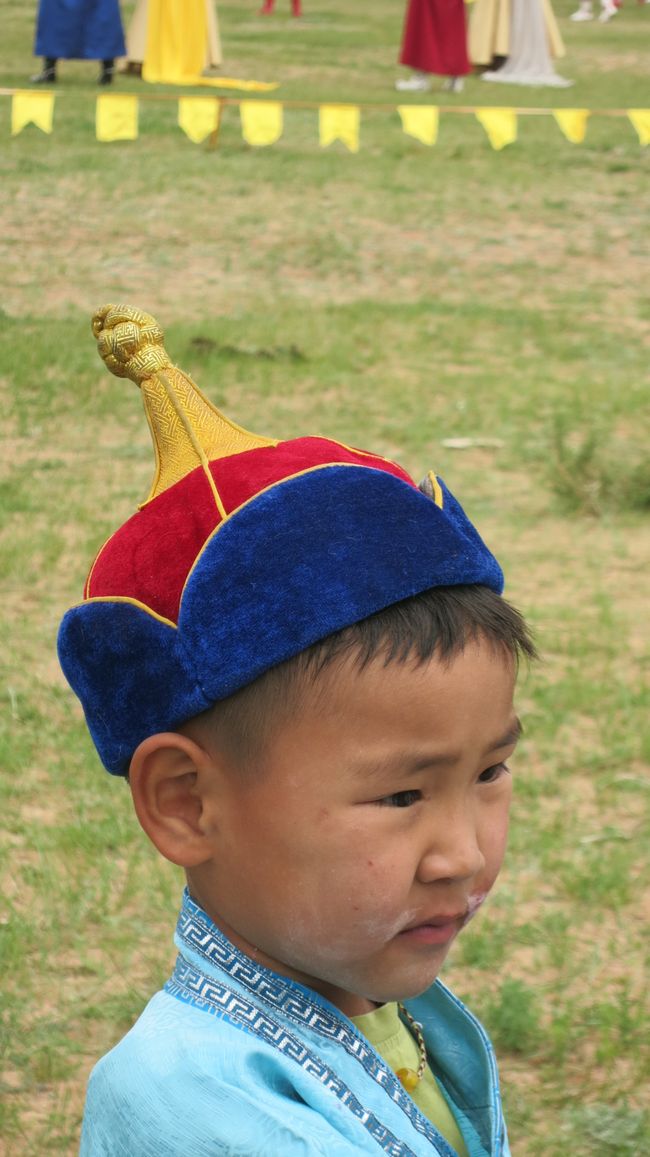
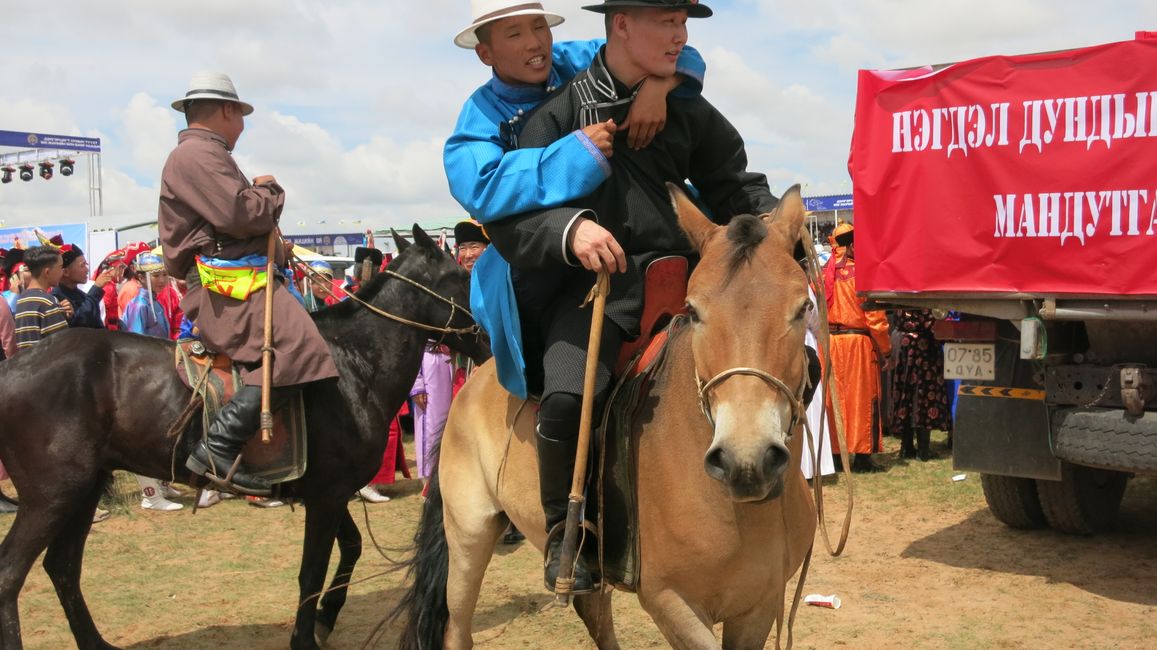
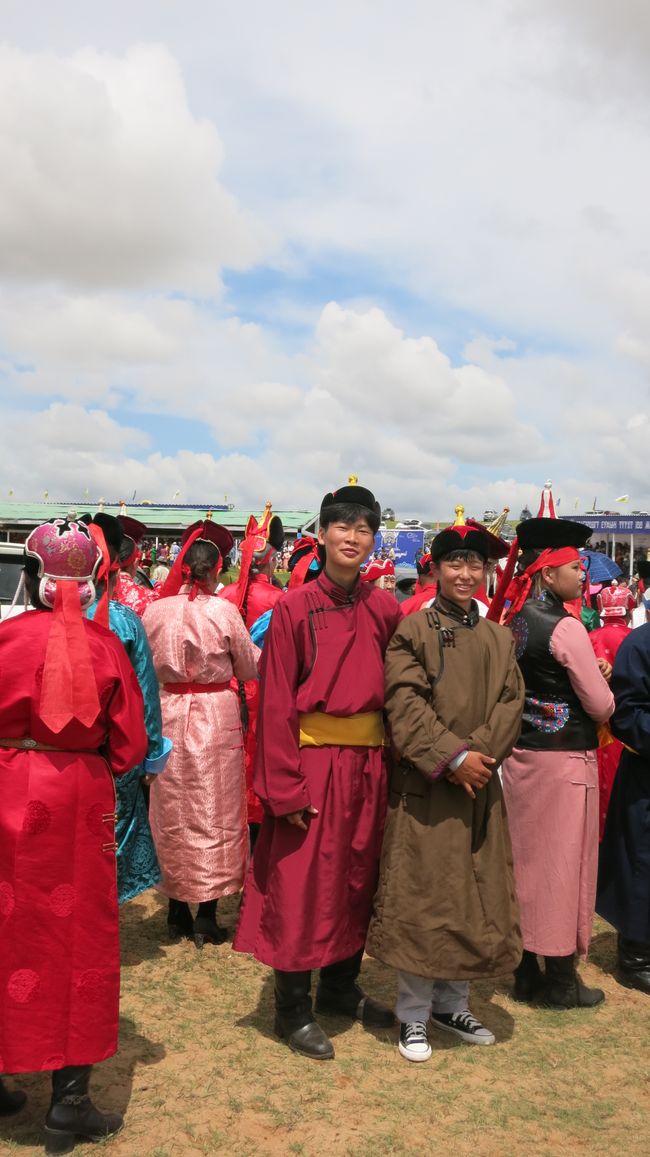
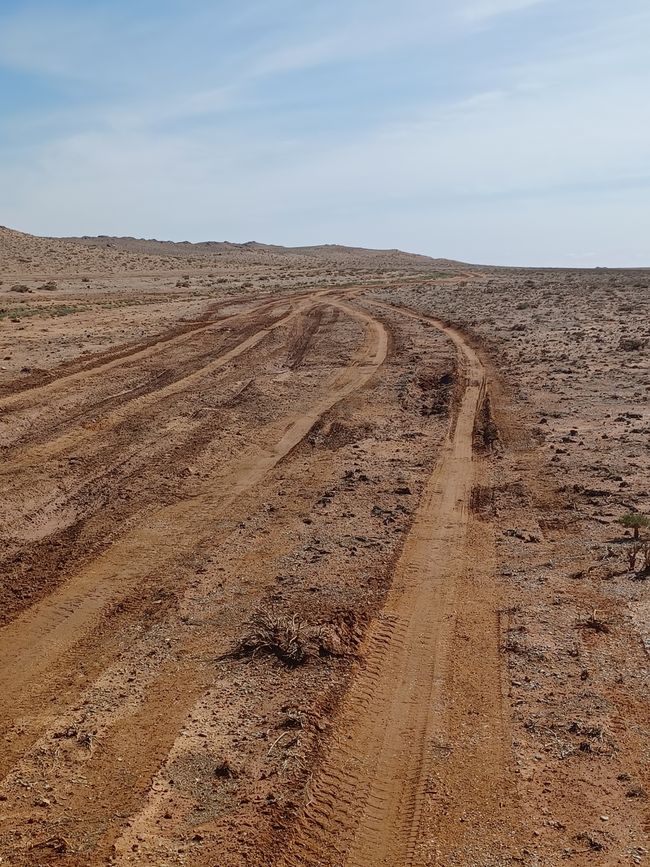
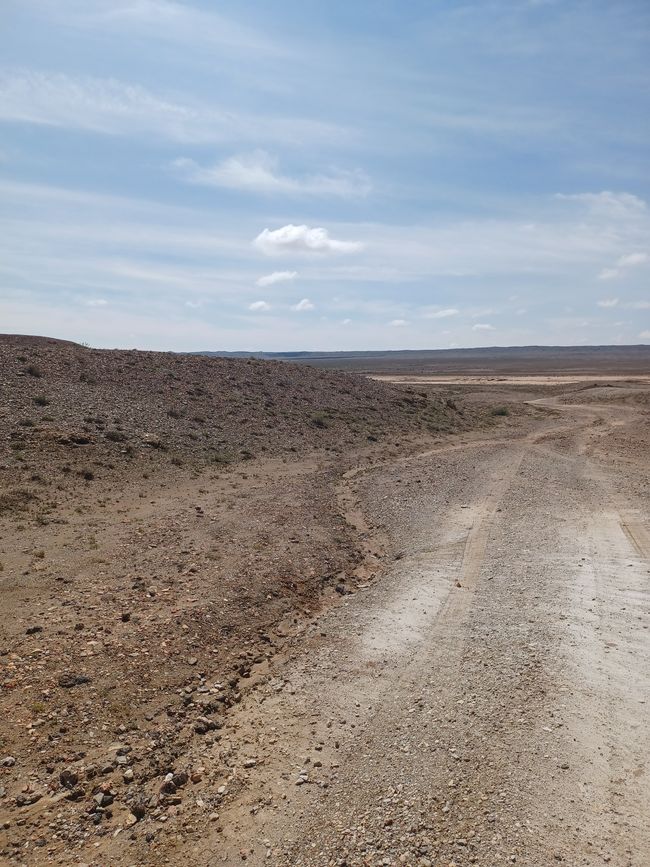
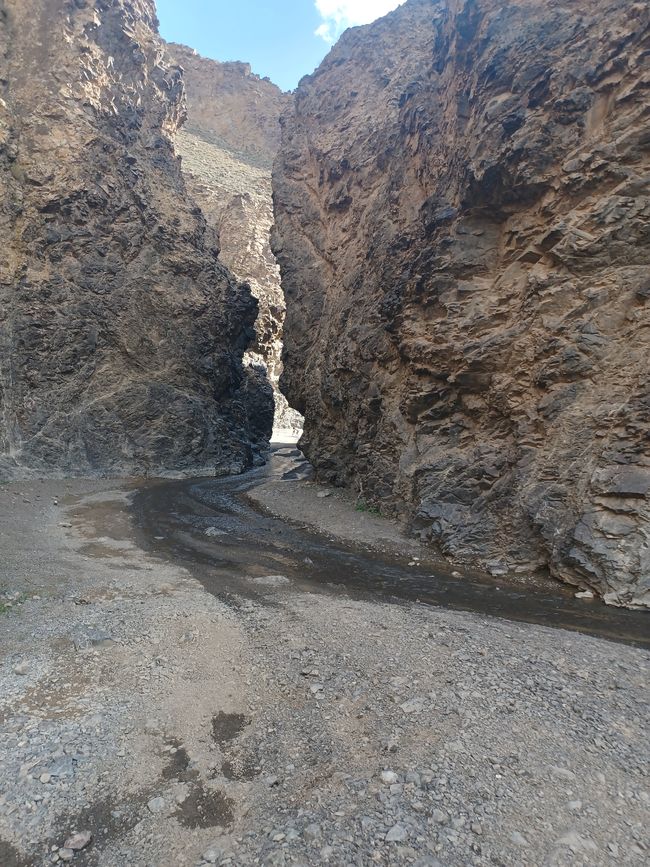
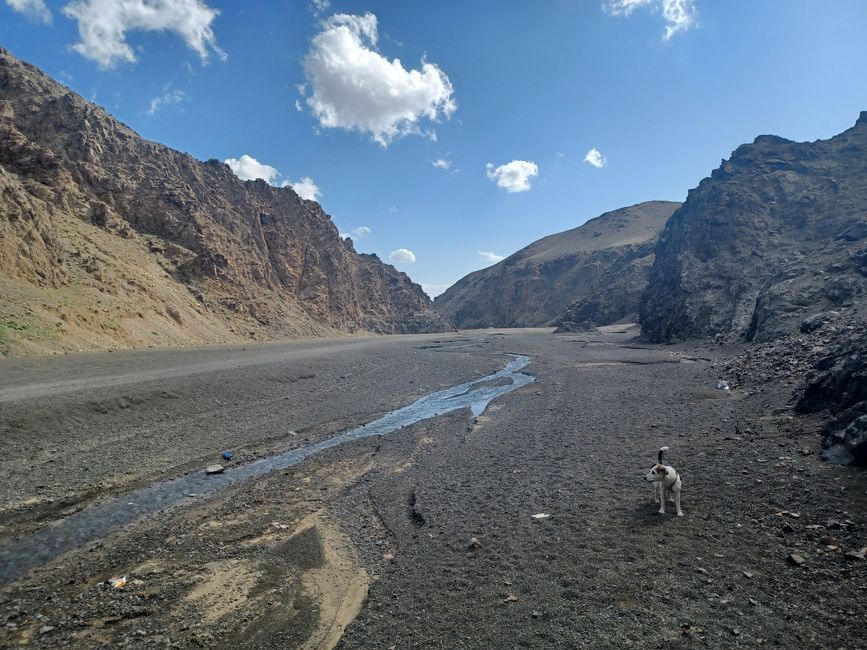
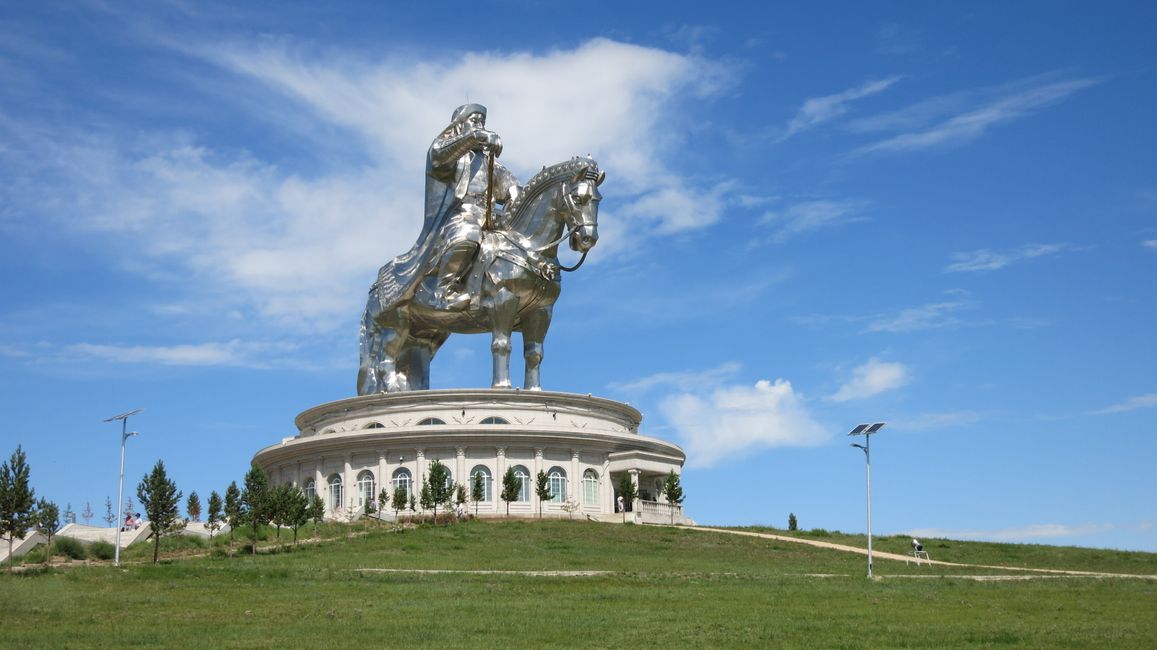
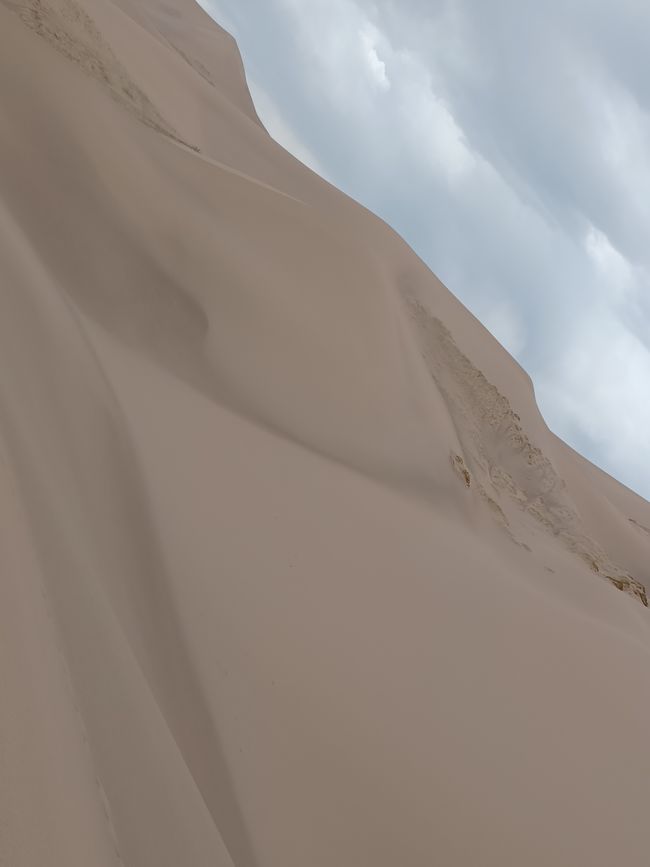
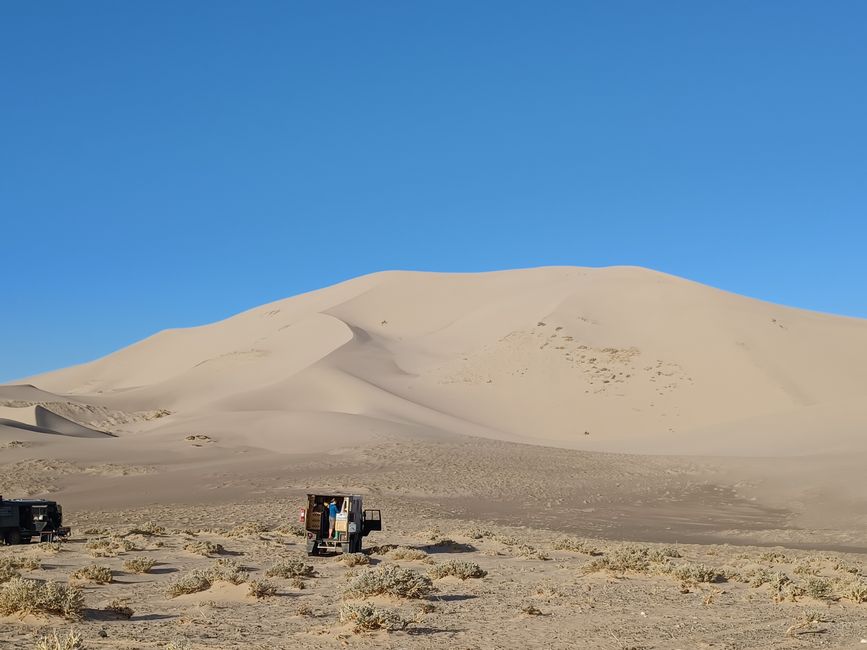
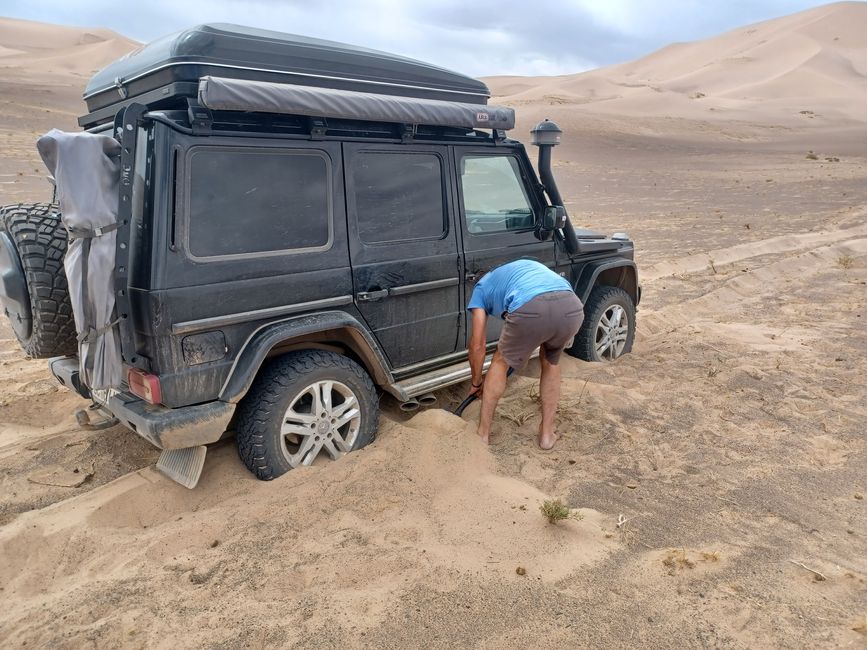
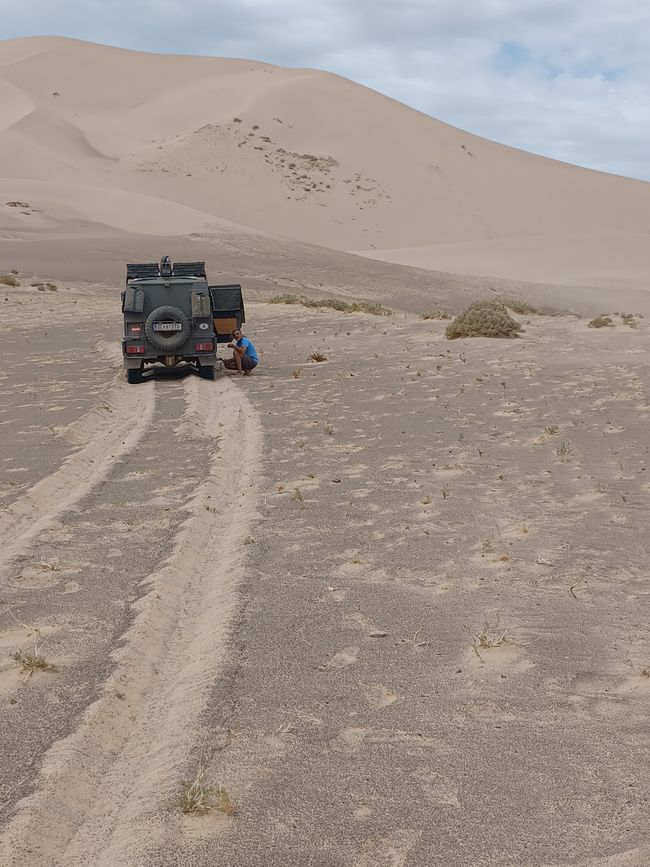
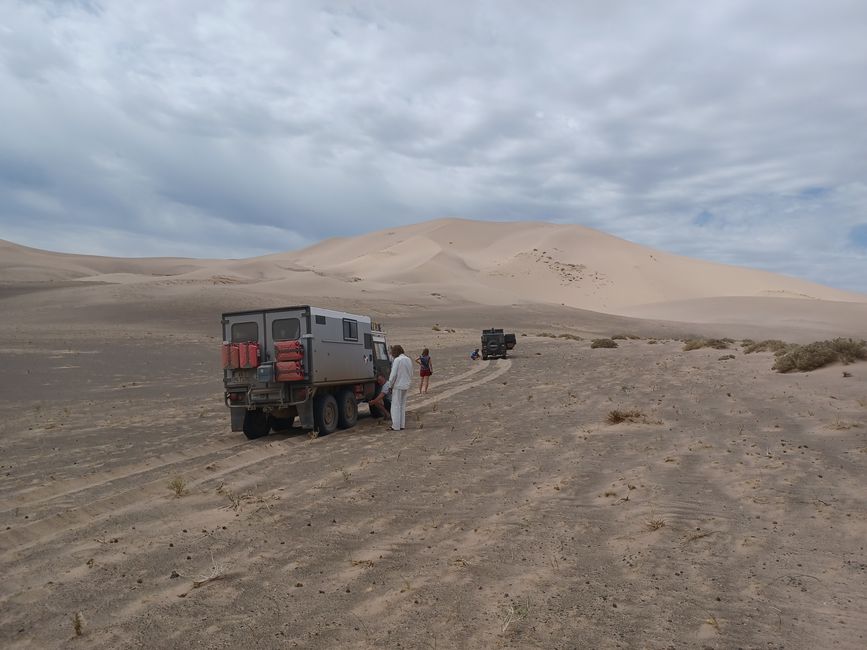
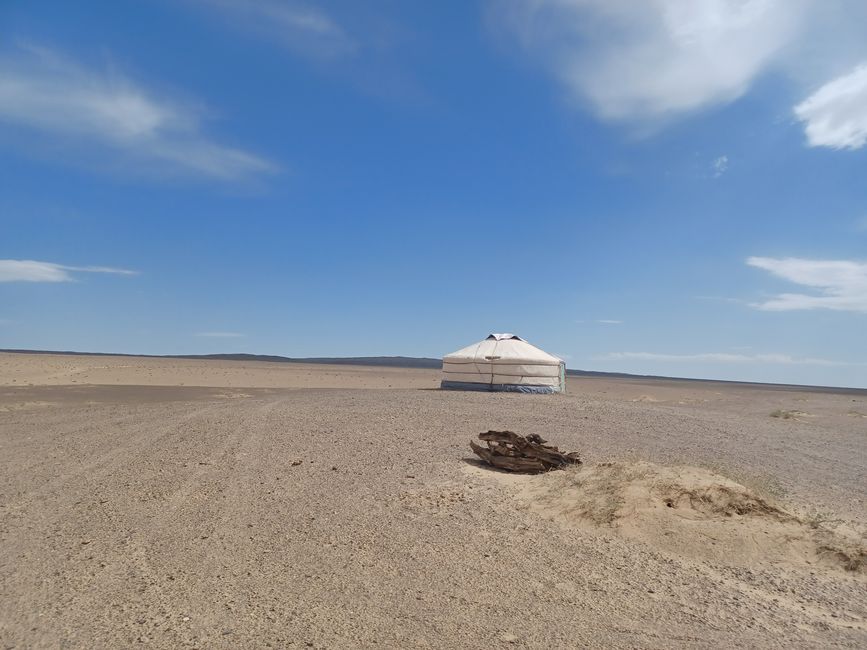
Abonējiet biļetenu
First of all: vastness. You can see up to 120 km to the left and right. From mountain range to mountain range while driving one of the countless tracks that the locals have created over the years. There are 10 or 20 tracks going in the same direction. The route is uneven, bumpy, and full of potholes, puddles, mud, or rocks. If you have an average speed of more than 40 km/h there, you are experienced.
Rivers, I wonder how the locals manage to cross them with their normal cars. Well, I did see one that had to be pulled out of the river.
You try out the tracks that seem the softest, it's like a lottery game and if you're unlucky, one of them turns in a completely wrong direction and you have to drive across to one of the neighboring tracks.
At first, it's a steppe-like, rocky area with herds of camels, horses, sheep, or goats (very emaciated in the drought areas), and then the mountains get closer from the side and I find myself in the most beautiful rock landscape. In a colorful one. There are red, green, gray, pink, red, yellow, and white rock mountains. I will research at home what kind of stones they are.
We passed by a traditional folk festival where traditional music is made and danced every year, clothing is worn, and competitions are held.
The people in the cities and in the countryside also dress traditionally. There, the herders drive their cattle wearing colorful coats and Mongolian felt boots, either on horseback or on motorcycles, or they go shopping in this attire.
We continue through mountains and through gorges, which are perfect for camping as they are sheltered from the wind, provide shade, and often have mountain streams with which I can wash dishes and myself. Yes, it's cold. Freezing.
Yes, and there is also a monument to Genghis Khan at the place where he is said to have found a golden whip according to legend. By the way, there is a lot of "Khan" here: streets, banks, stores.
And slowly the rocky mountain landscape changes and is replaced by the sand desert. I climb sand dunes, quite exhausting. We all get stuck in the shifting sand, have to let out air and dig ourselves out to continue driving.
Yurts are practically everywhere, the more water there is, the more yurts there are. Others have their neighbors many kilometers away on rock roads. I wonder what the children do in the solitude, how they go to school, if they go to school at all. There are also yurts in the cities, cramped between concrete buildings, old or new.
Abonējiet biļetenu
Atbilde

